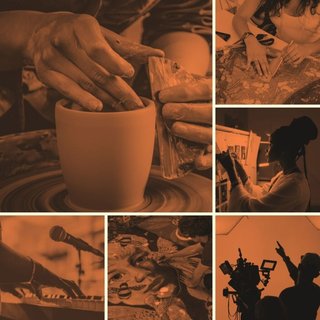Arts and Culture Web Development: Bridging Tradition and Technology
Wiki Article
In a era where digital presence is key, the development of arts and culture websites has developed into a crucial component in preserving and promoting cultural heritage. These websites serve as virtual gateways, providing global audiences with access to artistic treasures, historical artifacts, and cultural narratives. The intersection of web design and the arts provides an opportunity to blend tradition with technology, creating immersive and interactive experiences. Here’s a thorough look at the key components and best Arts and Culture audience engagement.

1. User-Centric Design
A user-centric design approach is important for creating engaging arts and culture websites. This requires understanding the needs and behaviors from the target audience and designing an interface that's intuitive, accessible, and great looking.
Key Elements:
Responsive Design: Ensuring the web site is accessible on various devices, from desktops to cell phones.
Intuitive Navigation: Simplified menus and clear calls-to-action to steer users effortlessly with the site.
Looks: Utilizing high-quality images, videos, and interactive elements to produce a visually stimulating experience.
2. High-Quality Content
Submissions are the heart of arts and culture websites. It ought to be rich, diverse, and engaging, offering users a deep dive into the cultural and artistic world.
Key Elements:
Multimedia Integration: Incorporating videos, audio clips, and interactive galleries to enhance user engagement.
Detailed Descriptions: Providing comprehensive information about artworks, artifacts, and cultural stories.
Multilingual Support: Offering content in multiple languages to cater to a global audience.
3. Virtual Exhibitions and Tours
Virtual exhibitions and tours have revolutionized the way in which people explore museums and cultural sites. They provide an immersive experience, allowing users to understand more about collections from anywhere in the world.
Key Elements:
360-Degree Views: Providing panoramic views of galleries and exhibitions.
Interactive Features: Enabling users to click on artifacts for detailed information and close-up views.
Augmented Reality (AR) Integration: Allowing users to have artifacts inside their physical space through AR applications.
4. E-Commerce and internet based Ticketing
Integrating e-commerce and internet based ticketing functionalities can boost the user experience by giving seamless use of museum shops and event bookings.
Key Elements:
Secure Payment Gateways: Ensuring secure transactions for online purchases and donations.
User Accounts: Allowing users to create accounts for personalized experiences and easy access to past purchases.
Event Calendars: Displaying upcoming events and exhibitions with easy booking options.
5. Community Engagement and Interactive Features
Developing a sense of community is important for arts and culture websites. Interactive features can foster engagement and encourage user participation.
Important elements:
Discussion Forums and Comment Sections: Providing platforms for users to talk about their thoughts and engage in discussions.
User-Generated Content: Encouraging users to contribute content, such as reviews, photos, and stories.
Social Media Integration: Facilitating easy sharing of content on social media marketing platforms to succeed in a broader audience.
6. Accessibility and Inclusivity
Making certain the website is accessible to all users, including those with disabilities, is essential for inclusivity.
Key components:
Alt Text for Images: Providing descriptive text for images to assist users with visual impairments.
Keyboard Navigation: Ensuring the website can be navigated using a keyboard.
Subtitles and Transcripts: Offering subtitles for videos and transcripts for audio content.
7. Analytics and Continuous Improvement
Regularly analyzing user behavior and feedback will help in continuously enhancing the website to better serve its audience.
Important elements:
User Analytics: Tracking user interactions to understand preferences and pain points.
Feedback Mechanisms: Providing easy ways for users to supply feedback and suggestions.
Regular Updates: Maintaining your website content fresh and relevant with regular updates.
Conclusion
The introduction of arts and culture websites is a dynamic field that blends creativity with technology. By emphasizing user-centric design, high-quality content, immersive experiences, and community engagement, websites like these can effectively bridge the space between tradition and modernity. As technology evolves, the potential for innovative and fascinating digital experiences within the arts and culture sector keeps growing, promising a vibrant future for your preservation and promotion of cultural heritage.